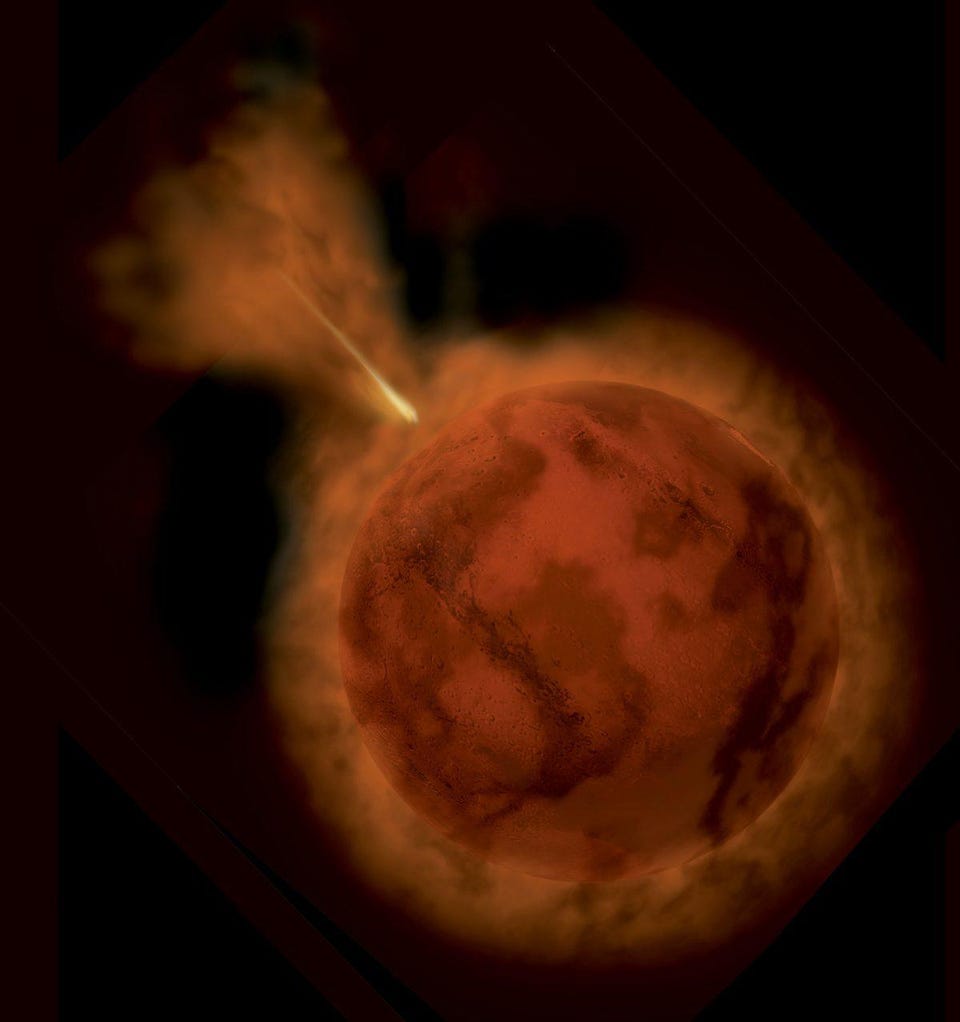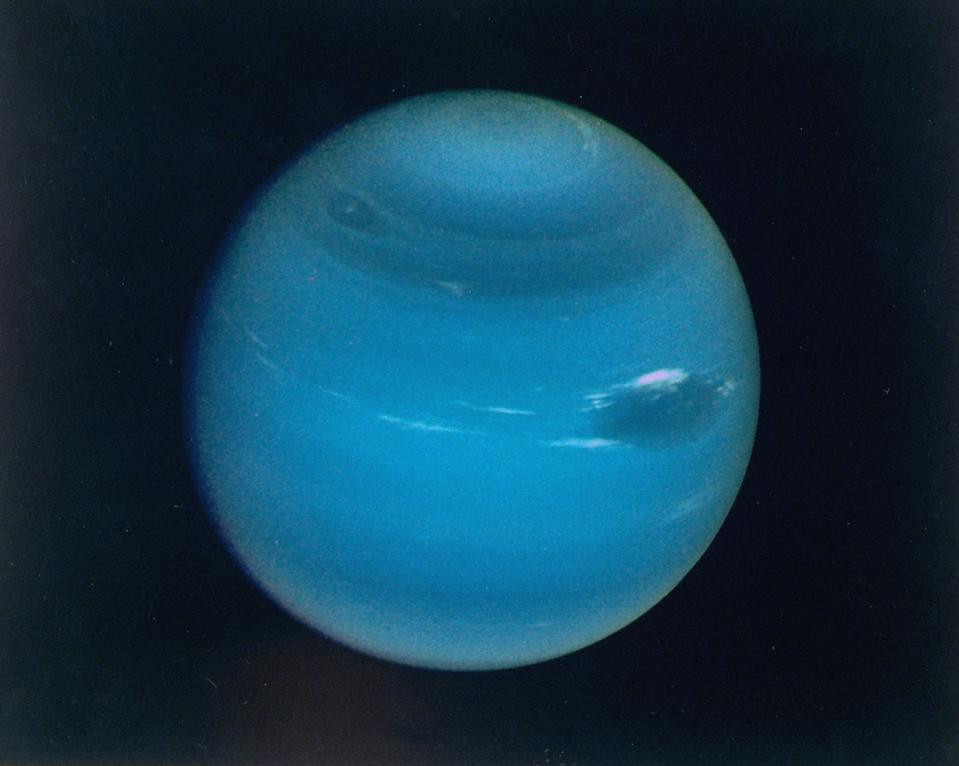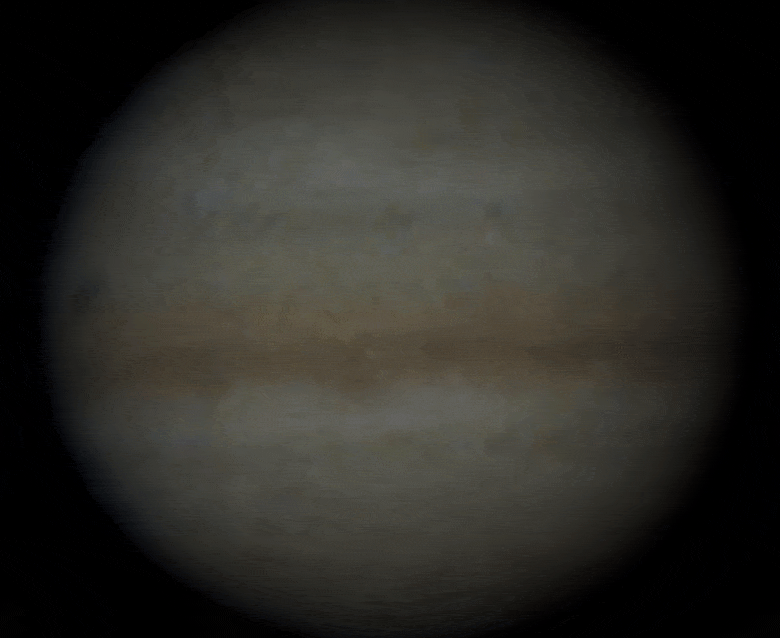After 350 years, astronomers still can’t explain the solar system’s strangest moon
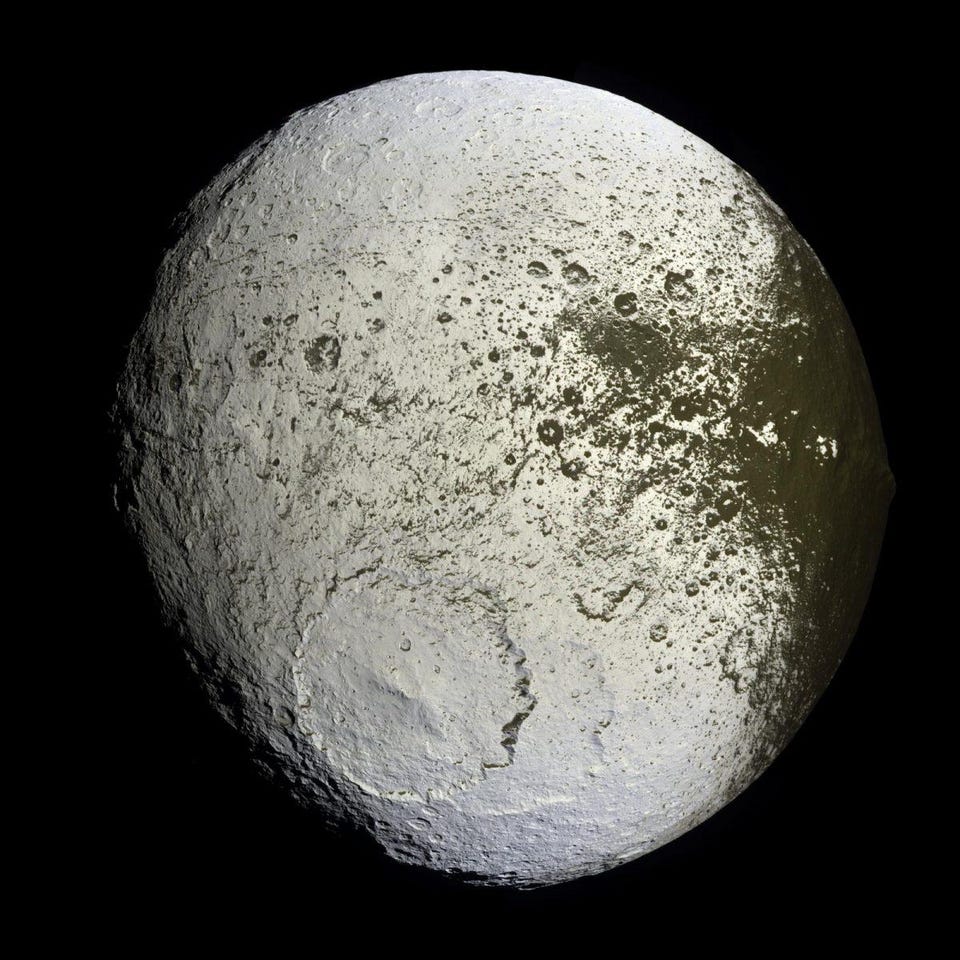
- Iapetus, the second moon ever discovered around Saturn back in 1671, has three bizarre properties that science still struggles to explain.
- It orbits out of Saturn’s plane and has a two-toned appearance, an equatorial bulge, and a giant ridge.
- How did it form and develop these strange properties? 350 years later, we still don’t know.
After having no superior tools to our naked eyes to explore the universe, the 17th century ushered in a revolution with the adoption of the telescope. With larger apertures and the power to gather more light at once, objects beyond the limits of human visibility — both in terms of resolution and faintness — suddenly transformed from being unobservable to being observable at will. Almost immediately, new objects and features became apparent, including the four major moons of Jupiter, the phases of Venus, the rings of Saturn with many features inside, and much more.
Then in 1671, Italian astronomer Giovanni Cassini was observing Saturn, already known to possess a giant moon, Titan, and discovered another moon: Iapetus. While Cassini would go on to make many other discoveries about Saturn, including numerous other moons, Iapetus was one of the strangest things anyone had ever seen in the sky. Cassini discovered Iapetus on the western side of Saturn, but when he looked for it later in its orbit, on Saturn’s eastern side, it wasn’t there. The moon remained missing for decades until, with a significantly upgraded telescope, Cassini finally saw it, a full two magnitudes fainter than it appears on Saturn’s western side, in 1705. As remarkable as that was, it was just the start toward understanding the mystery of Iapetus: our solar system’s strangest moon.
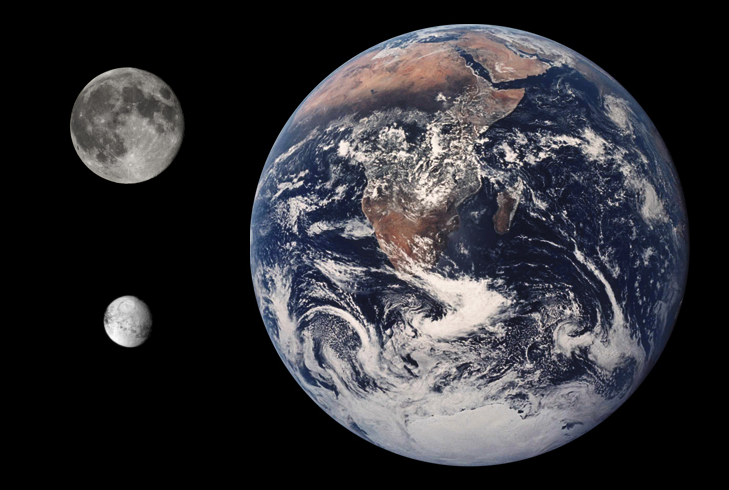
Today, we have the luxury of hundreds of years of scientific advances at our disposal, and technologies about which Cassini could have only dreamed. Modern telescope have hundreds of times the light-gathering power of the greatest telescopes of his day, with views that take us into wavelengths that the human eye cannot observe, with numerous observatories located in space, and with a few of them — like the Voyager 1 spacecraft or NASA’s Cassini mission — actually traveling to and imaging these distant worlds in situ.
Saturn, like all of the gas giant worlds in our solar system, has its own unique and rich system of satellites, largely in the form of moons and rings. The main rings are by far the most prominent feature, with small, young moons and moonlets inside. Outside of the main rings, Saturn possesses eight significant, prominent moons:
- Mimas
- Enceladus
- Tethys
- Dione
- Rhea
- Titan
- Hyperion
- Iapetus
Of these eight moons, Iapetus is not only the outermost one, but also possesses three specific features that make it unique.
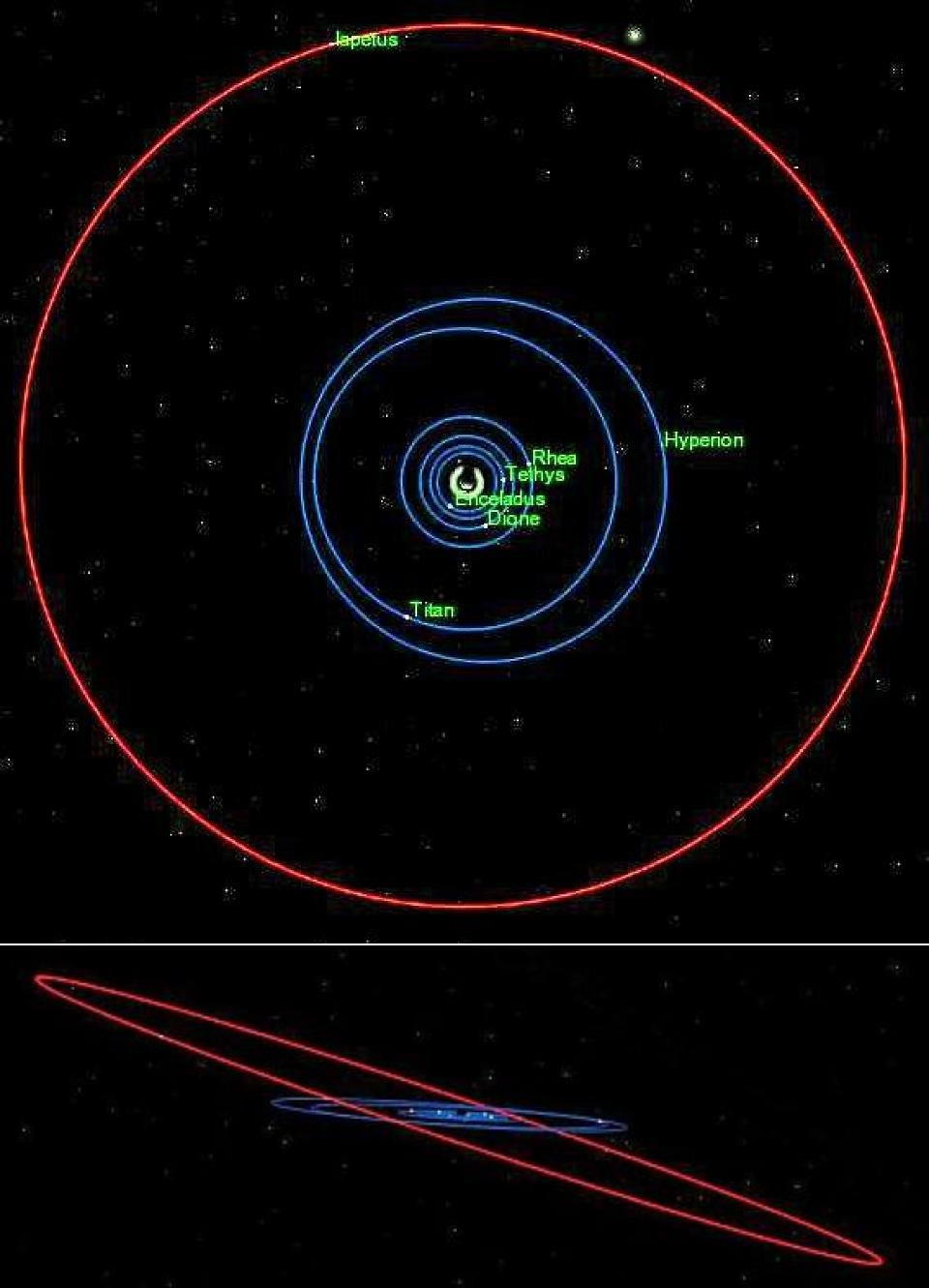
(Credits: English Wikipedia user The Singing Badger)
1.) Iapetus doesn’t orbit in the same plane as the rest of the Saturnian system. Of all the planets in the solar system, Saturn rotates the second most quickly, completing a full rotation about its axis in merely 10.7 hours. Saturn’s rings orbit in that same plane, made almost exclusively of water-ice. And of its eight aforementioned moons, seven of them orbit within 1.6° of that same plane, with only Mimas having an inclination greater than a half-degree.
Except, that is, for Iapetus. Orbiting Saturn at more than double the distance of Titan or Hyperion, Iapetus is inclined at 15.5° with respect to the rest of the Saturnian system: a difficult property to explain. Typically, there are only three ways to make a moon: from a circumplanetary disk, from a collision that kicks up copious amounts of debris, or from a gravitational capture. Given that Iapetus is Saturn’s third largest moon, that it appears to have a similar composition to Saturn’s other prominent moons, and that it has almost no orbital eccentricity, even the cleverest of gravitational encounters struggle to migrate Iapetus out of Saturn’s plane, if, in fact, that’s where it originally formed.
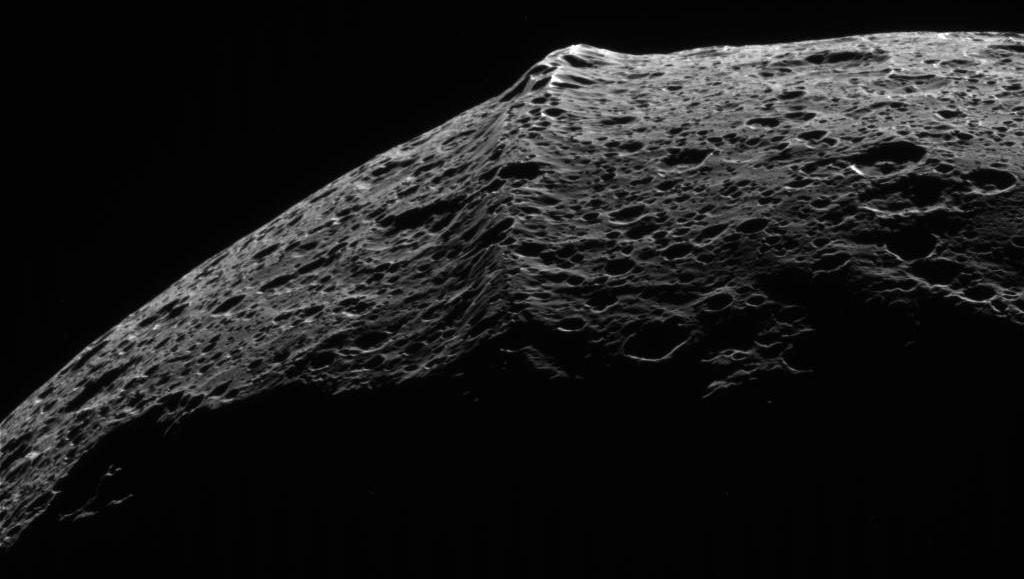
(Credit: NASA / JPL-Caltech / Space Science Institute / Cassini)
2.) Iapetus has an abnormally shaped equator. Much like the Earth, moon, or sun, Iapetus is not a perfect sphere. However, whereas the Earth and sun slightly bulge at the equator and appear compressed at their poles due to the balance between gravitation and the angular momentum caused by their rotation — a condition known as hydrostatic equilibrium — Iapetus’s properties are all wrong for its motion. Its equator has a diameter of 1,492 kilometers compared to its pole-to-pole diameter of just 1,424 kilometers, which would represent hydrostatic equilibrium if Iapetus rotated a full 360° every ~16 hours. But it doesn’t. Iapetus is tidally locked to Saturn, meaning it rotates only once every 79 days.
In addition, the Cassini mission’s visit to Iapetus showed something entirely novel and unexpected: an enormous equatorial ridge spanning 1,300 kilometers across, or nearly the full diameter of the planet. The ridge is about 20 kilometers wide, 13 kilometers high, and follows the equator almost perfectly. There are multiple disconnected segments apart from the main ridge, numerous isolated peaks, and sections where the single ridge appears to break apart into three parallel ridges. It’s the only world in the solar system with any such feature, and every theory struggles to explain just how this world came to have these equatorial properties.
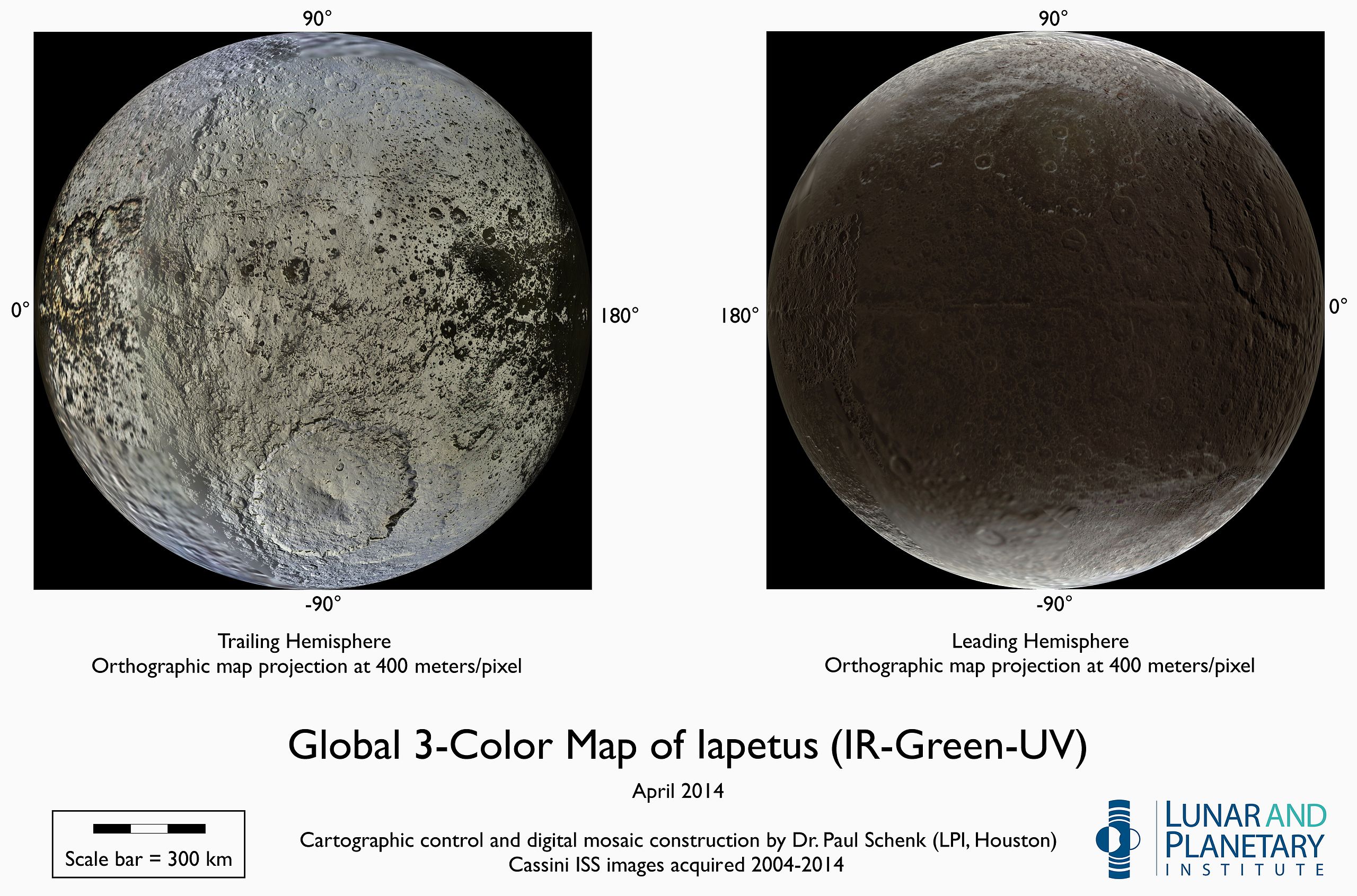
Credit: NASA / JPL-Caltech / Space Science Institute / Lunar and Planetary Institute
3.) Iapetus has a distinctly two-toned color. Believe it or not, back when Iapetus was first discovered, this was precisely the explanation advanced by Cassini himself for what he was seeing. Realizing that the same telescope that saw Iapetus over the western end of Saturn should have been capable of revealing it over the eastern end, Cassini hypothesized that:
- one hemisphere of Iapetus must be intrinsically much darker (and fainter) than the other,
- Iapetus must be tidally locked to Saturn, so that the same hemisphere faced us at the same point in its orbit,
- this difference must be detectable when larger telescopes became available.
Not only did Cassini nail his predictions for his 1670s-era observations, but he himself was the one who made the critical first detection of Iapetus off of Saturn’s eastern edge when he himself obtained superior equipment in 1705.
Unlike the other two conundrums, however, this puzzle has finally been solved — a feat that would have been virtually impossible in Cassini’s time. As you can see from a full-color map of Iapetus, the “leading” hemisphere is extremely dark, as if it’s reddish-brown in color, while the “trailing” hemisphere is snow white, covered in various volatile ices.
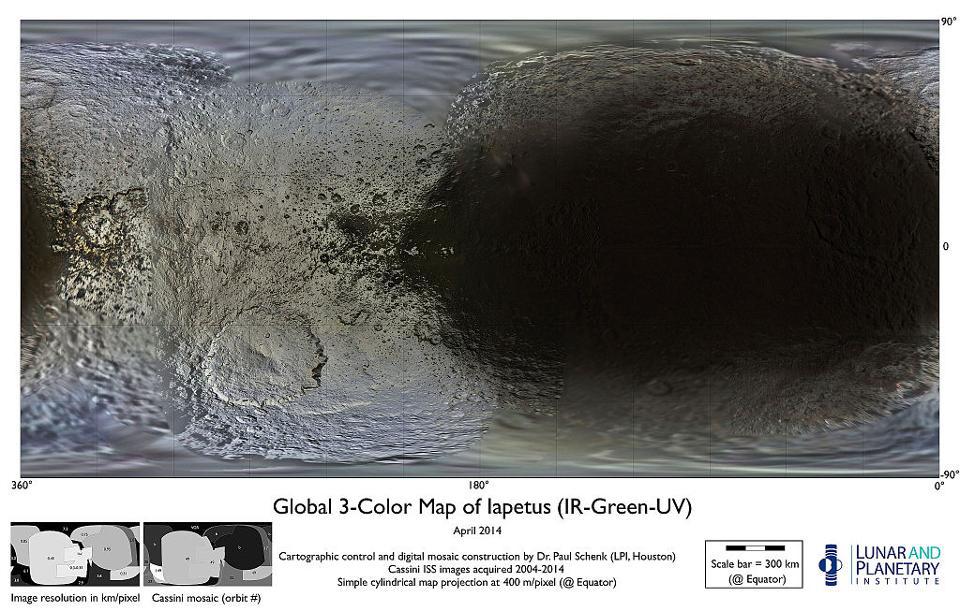
If you’ve ever driven your car on a highway through a swarm of insects, these views of Iapetus might bring up some visceral memories for you. Because only the “leading” hemisphere — or, the one that’s analogous to your car’s windshield — is the one plowing into the matter directly in front of it, only one side gets covered in “bugs.”
Of course, there are no bugs in space. But beyond the main rings of Saturn, there is something that functions as a source of darkened matter: a diffuse, enormous cloud of matter. This matter isn’t visible in the optical, but rather was only detectable because of our infrared space telescopes that could detect the radiation emitted by dust that’s been warmed by the sun.
As it turns out, there’s an extremely large but low-mass ring of matter, inclined to both Saturn’s rotational direction and also to Iapetus’s orbit, that’s spread out across a distance of nearly 100 million kilometers: just shy of the Earth-sun distance.

(Credit: NASA / JPL-Caltech / Cassini Science Team)
The reason for this outer, diffuse dust ring is simple, straightforward, and completely counterintuitive. It comes from the only other large moon in the Saturnian system: the captured body Phoebe, which orbits almost completely opposite to Saturn’s rotational direction. This captured icy body emits volatiles when exposed to the sun, and is now thought to be the ultimate cause of Iapetus’s two-toned color, although the story is a little bit more complex than the simple story you might have concocted.
Simple but incorrect: Phoebe emits particles, they land on one side of Iapetus, and that’s why it’s two different colors.
More complex but correct: Phoebe emits particles, and Iapetus plows into that particle stream. When exposed to direct sunlight, the side of Iapetus without those particles from Phoebe retains smaller amounts of heat than the side with those particles, and so the ices on the “hotter” part are more likely to sublimate, where they can land on the “colder” side. Over time, the icy volatiles build up on the “colder” side, while the icy volatiles are boiled off of the “hotter” hemisphere, leaving only the non-volatile particles behind that are better at absorbing heat.
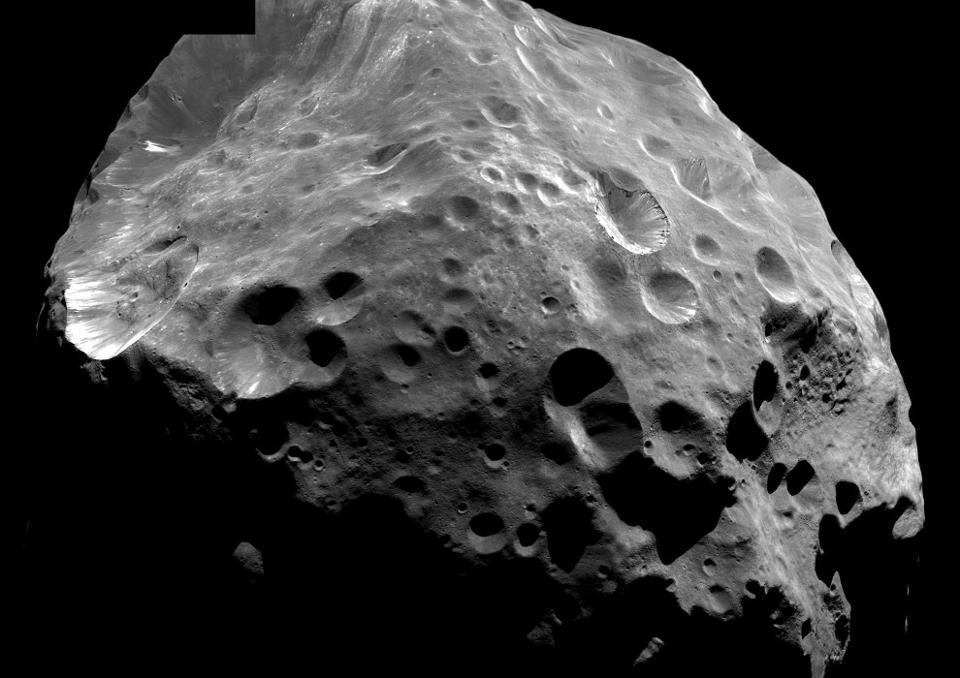
(Credit: NASA/JPL/Space Science Institute)
That’s the generally accepted explanation for why Iapetus has this two-toned nature. Looking at the rest of Iapetus, there are a few other features that are notable, although not exactly uncommon for the solar system. Iapetus possesses a heavily-cratered surface all over where a small number of large, ancient craters lie underneath a more copiously cratered recent history. It also is rich in darker material occupying the low-lying regions, while volatile ices cover the heavily sloped area. Additionally, the side “facing Saturn” has a continuous equatorial ridge, while the “away-from-Saturn” side has just a few partially bright mountains separated by more plains-like regions.
When we look at all of these facts together, along with the bulk properties of Iapetus such as its density and composition, we can construct a scenario that isn’t necessarily 100% correct (and certainly isn’t generally accepted), but that provides a plausible explanation for how Iapetus came to be.
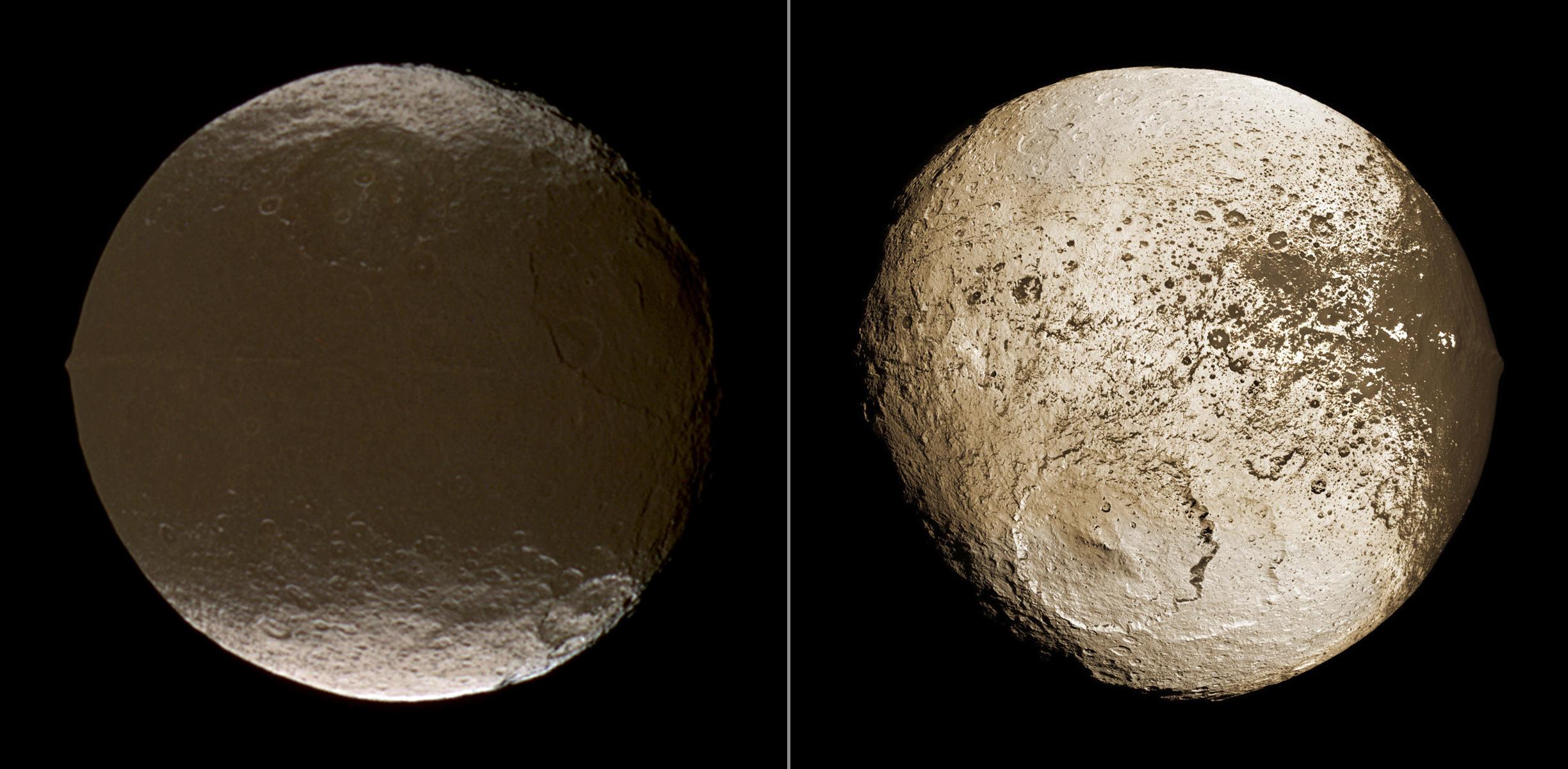
Back in the solar system’s very early days, the proto-sun was heating up while instabilities formed in the surrounding protoplanetary disk. The largest, earliest two instabilities would grow into the truly giant worlds Jupiter and Saturn, while all the gas giants developed circumplanetary disks. Each of these disks would fragment apart, forming a series of moons all in the same plane. One of these was Iapetus, which may have formed from an early, massive collision in the young Saturnian system, or was perturbed out of the Saturnian plane through gravitational interactions. Iapetus, of Saturn’s eight major moons, becomes the only one from which the ring system is visible.
In the early days of this system, Iapetus was rotating rapidly, causing it to bulge. It quickly solidified, while major impacts created its five largest craters and kicked up debris. Some of that debris may have formed a ring or a moon that was tidally broken up into a debris disk, which then fell down onto the surface of Iapetus, forming the equatorial ridge, while the bulge became frozen in. Over time, once Phoebe became captured, a small amount of its dust-rich volatiles landed on the leading hemisphere of Iapetus, causing the ices to sublimate away and depositing darkened material. Over the remainder of the solar system’s history, the ices cluster on the trailing hemisphere, leaving the darkened material to pile up on the leading side. By the present day, it’s nearly a foot (about 25 to 30 cm) thick.
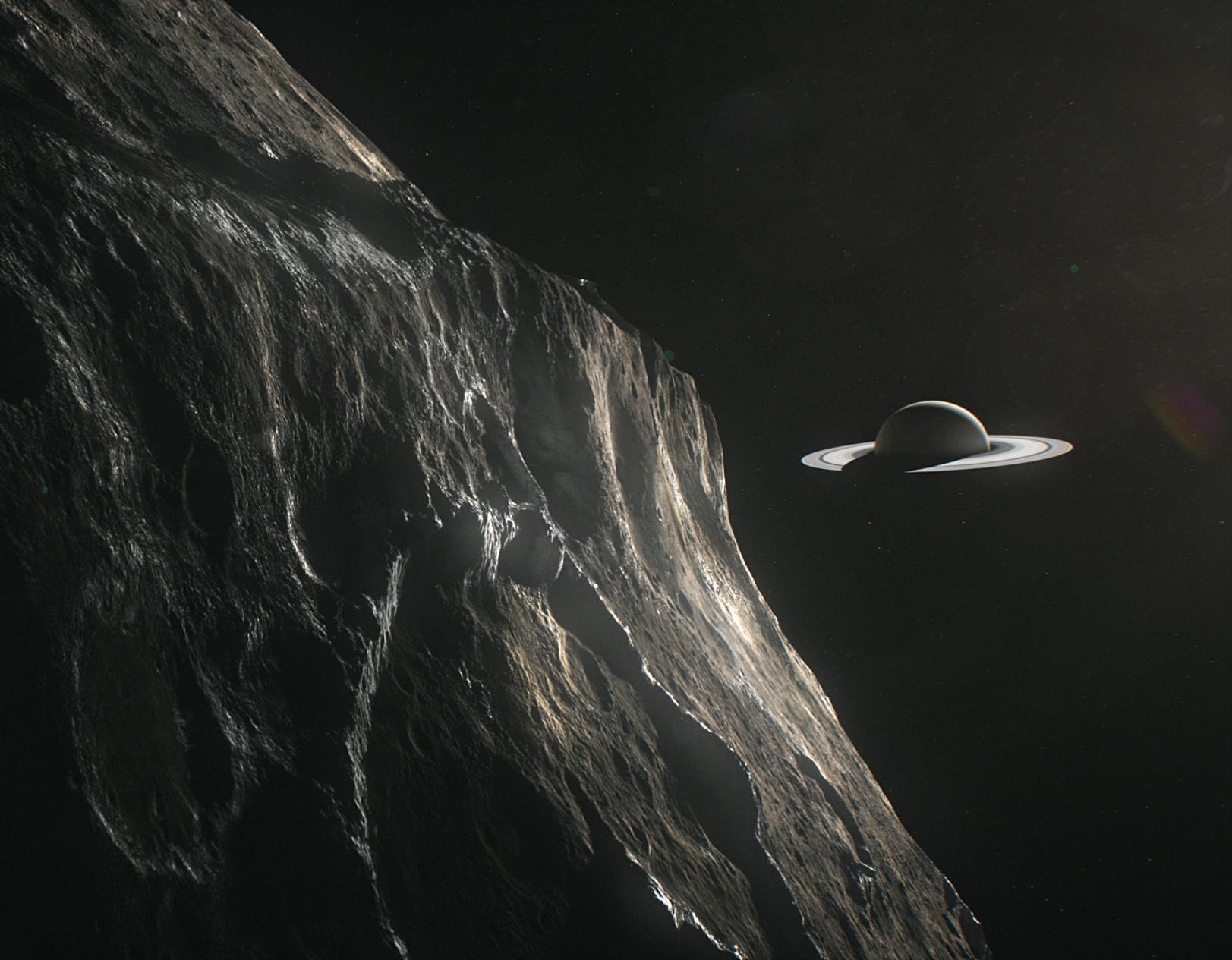
And yet, despite how promising this scenario is, we do not presently have enough information at our disposal to either validate it or rule out alternatives. The equatorial ridge and bulge could have formed if the crust of Iapetus “froze” solid in the moon’s early stages, with the ridge coming from icy material that upwelled and solidified. Alternatively, a large amount of aluminum-26 could have been trapped in the moon’s interior, heating Iapetus and creating these features. And based on the fact that there are no in-plane bodies farther out than Iapetus, it’s possible, although not favored, that this is in fact a captured body, like Neptune’s Triton, that ejected whatever primeval system the main planetary body once possessed on its path to gravitational capture.
In science, it’s important to maintain two conflicting thought processes simultaneously. On the one hand, you need to consider the full suite of observed phenomena and properties about the entire system you’re investigating, and take up the position that most comprehensively explains everything that’s seen without any dealbreaker conflicts. On the other hand, you have to consider every conceivable explanation that isn’t definitively ruled out, leaving your mind open to revising each and every aspect if newer and better data compels you to do so. Here we are in 2021, a full 350 years after Iapetus’s discovery, and we still can’t decisively explain it all. Such is the nature — and such are the limitations — of the scientific process.
